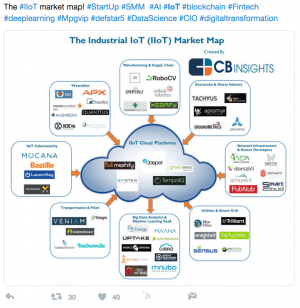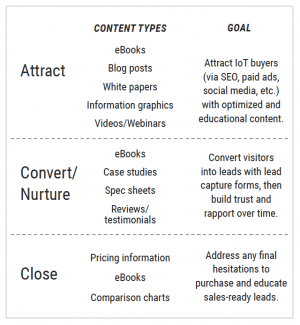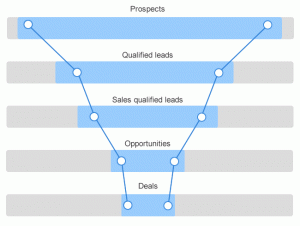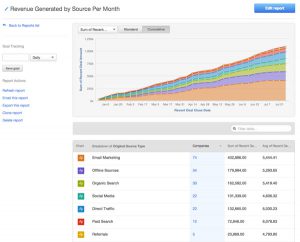
In the B2B space, you need technology content marketing to attract leads, convert customers, and win over advocates digitally. It's important to stand out as a thought leader, and you probably want your content to help your website rank in major search engines, too.
57.5% of SME owners plan to invest in a new or improved website. However, only 29.8% plan to invest in search engine optimization, according to Statista.
Therefore, content can be a huge differentiator for technology marketing companies, separating the good companies from the great, and helping savvy CMOs climb the ranks in Google.
Here are the steps you may take to grow authority and generate new business with technology content marketing.
An unsuccessful technology content marketing strategy will talk all about the product, its features, and the company itself. Consider that buyers won't know to search for your brand unless they already know your company by name. So this kind of self promotion will not help you acquire new prospects.
Instead, you should develop top-of-funnel content for your buyers' challenges, goals, and opportunities.
71% of companies who exceed revenue and lead goals have documented and researched their buyer personas. – Cintell
 More anecdotally, follow exemplary prospects on social media — analyze what content they share, comment on, favorite, and repost. Also note the hashtags and terminology they use.
More anecdotally, follow exemplary prospects on social media — analyze what content they share, comment on, favorite, and repost. Also note the hashtags and terminology they use.
High-performing companies conduct research into their target buyers. And they go beyond mere demographic information — such as gender, position, income, or revenue — and study the challenges, goals, and opportunities for buyers.
For example, maybe you're marketing your technology product on the basis of its efficiency. However, after researching your buyers, you may realize a large percentage are actually very concerned about security. Therefore, your content marketing strategy should focus on appeasing these fears, explaining risks, and educating about security methods.
In order to attract prospects but also keep your sales funnel full, you need to focus your content marketing resources across the buying journey.

For content that attracts brand new prospects — what we call "demand generation" — you'll need to publish top-of-funnel technology content regularly, perhaps once or twice per week. As you blog, don't write all over the place.
Instead, chase after strategic keyword clusters that represent your niche, such as "Industrial IoT" or "Machine learning." Contribute regularly towards these core topics, yet sprinkle related topics in to diversify.
Recall your buyer research and use it to guide each topic:
Note that your product/service doesn't need to be one degree of separation from a blog topic — it could be several away. For example, a blog post for an IoT product company could be about energy efficiency trends in the tech industry.
When you have an arsenal of content informed by your buyers and by key phrases, extend your reach beyond your own blog. Seek publishing opportunities in your industry: Industry magazines, opinion blogs, etc. Find publications that may syndicate your posts or accept thought leadership contributions. And contribute regularly as part of your content calendar.
Additionally, post to all of your content pieces on social media, and link between them (especially in your main navigation web pages) to lock in search authority.
 Content may address different goals, opportunities, and challenges at various stages in the funnel. Prospects may be looking to get inspired; opportunities may need to understand ROI or potential risks.
Content may address different goals, opportunities, and challenges at various stages in the funnel. Prospects may be looking to get inspired; opportunities may need to understand ROI or potential risks.
In the middle-of-funnel, create content that you can gate, or require more information of buyers to access. This will effectively turn prospects into business leads whom you can contact, send new content to, and nurture with emails over time.
Companies that excel at lead nurturing generate 50% more sales leads at 33% lower cost per lead. –DemandGen
Again, the context of where prospects fall in the purchase journey is extremely important. Are they simply researching? Have they indicated sales interest? Use your research to identify points in the sale process in which certain questions must be answered.
For example, in the IoT market, the top roadblocks for buyers are:
Therefore, content should answer these questions. For example: "Keeping Data Safe: The Complete IoT Guide for CTOs," or "Interoperability in IoT: How ABC Product Fits Into Your Company's IT Stack."
Marketing and sales teams must work together, sharing these content guides with both new prospects and sales-qualified opportunities. Technology-focused B2B content can be a launchpad into a sales conversation. And also, sales insights can inform marketing on different buyer insights, in order to drive new content offers.
In fact, misalignment between sales and marketing technologies and processes costs B2B companies 10% of revenue or more per year according to HubSpot.
A high quantity of technology content will give you insights for better quality content in the future.
In other words, your technology content marketing strategy should include these steps:
 For the highest chance of proving ROI, measure metrics on goals that revolve around lead generation and conversion — not "vanity metrics" like bounce rate, time on page, social shares, etc.
For the highest chance of proving ROI, measure metrics on goals that revolve around lead generation and conversion — not "vanity metrics" like bounce rate, time on page, social shares, etc.
"Analyze" is the step that many B2B marketers miss. Do not report on metrics such as visitors, social media shares, bounce rate, and traffic unless your business goals are directly related to outreach or website performance. Because if the business objective of your content is to grow the business, you should focus on lead generation, conversion rates, and the motion of prospects through your sales funnel instead.
For example, if a piece of your content goes "viral" on social media yet generates no leads, you're better to consider that piece unsuccessful.
Replicate and scale content strategies, topics, and platforms which generate business leads. And spend fewer resources on the content that doesn't. Over time, you may refine your technology content marketing into a lead generation powerhouse.
https://cintell.net/benchmark-2016-resourceaccess
https://blog.hubspot.com/sales/stats-that-prove-the-power-of-smarketing-slideshare
by Jonathan Franchell, CEO of Ironpaper - For more tips and hacks: Need to remove a new line after h1 tags? Both web designers and SEO practitioners need to employ headline tags: H1, H2, H3 in several ways to improve web page structure and tag...

The Crowded Arena of the IT Marketplace Updated December 2024 The Information Technology (IT) landscape is experiencing rapid growth and intensifying competition. IT spending is projected to reach nearly 5.1 trillion U.S. dollars in 2024, a...

The marketing industry is transforming significantly due to generative AI and increasing market complexity. Gartner's prediction of a 25% decline in traditional search traffic suggests that the era of search engines is dying. AI tools, particularly...

Updated December, 2024 The field of digital marketing is evolving rapidly in response to new technology and changing buyer expectations. To help career-minded marketers, we’ve rounded up the top 10 skills needed to succeed in the field. These are...
